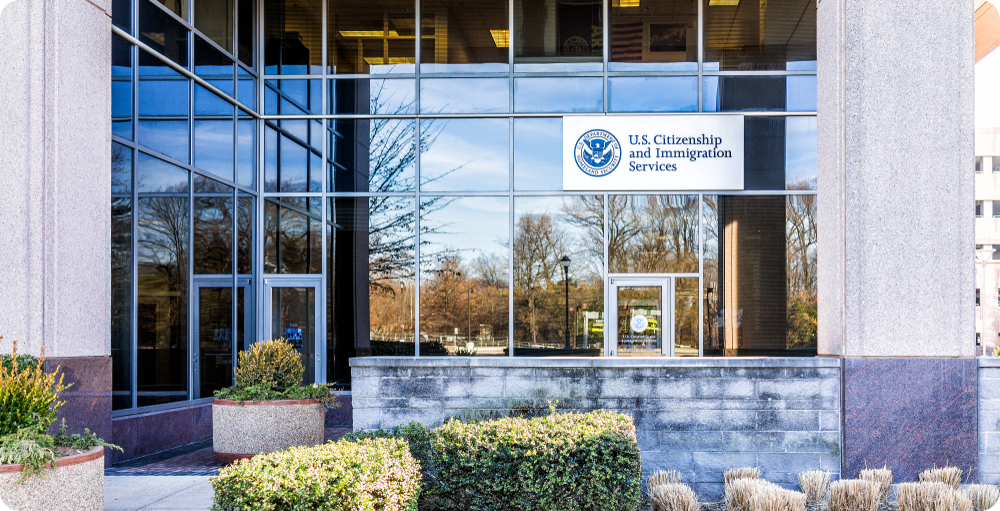Immigration lawyer Rana Jazayerli has worked with many Indian EB-5 investors and shares her insights on how the EB-5 Reform and Integrity Act of 22 (RIA) will impact Indians. She also talks about her concerns regarding non-rural reserved visas, priority-processing precedents with other visas, and how investing in rural locations will require a “mental shift” for Indians who are used to big-city projects.
With an Indian backlog that will take perhaps a decade to clear, how do the reserved visa set-asides impact Indians?
“For these investors the impact will be significant as they should be able to obtain their EB-5 conditional residency much faster than some of the individuals from India who invested and submitted their petitions under the prior law, or new investors who choose to invest in non-rural projects,” she tells us. “But it really comes down to how are we going to see this actually play out — how will USCIS interpret priority processing for rural projects.”
The benefits of rural EB-5 investments
For new investors that filed after the enactment of the RIA, there are three categories of investments that qualify for reserved-visa set-asides: rural investments with a 20% set-aside (2,000 in a standard year of 10,000 visas), high-unemployment-area investments (10% set-aside), and infrastructure investments (2% set-aside).
The significant advantage of these set-aside visa categories is that they allow Indian investors (as well as Chinese and Vietnamese investors) to avoid the extensive wait for an immigrant visa, which can be as long as decade or more.
But when it comes to reserved visas, Jazayerli gravitates towards rural investments as they offer not only the largest set-aside but “priority processing.”
Currently, the published processing times on USCIS’ website (for 80 percent of I-526 Petitions) is 46 months for Indian investors — in other words, almost four years.
And approval of the I-526 or I-526E petition is necessary before investors living outside of the United States can then apply for the immigrant visa and enter the U.S. as conditional residents. So being able to get priority or expedited processing for the I-526E Petition could significantly reduce an investor’s wait time to actually apply for the immigrant visa and become a U.S. conditional resident.
Other visa precedents for priority processing
Priority processing will be faster. However, like much of the industry at the moment, Jazayerli is not clear on exactly how long rural priority processing will take. But she points out that priority processing is established with other U.S. visas as “premium processing.”
“We already have priority processing in immigration law. We have it for I-129 petitions, for certain categories of temporary employment. And we have it for some categories of I-I40 petitions, which are filed by U.S. employers for permanent residency of an employee. So it is not unprecedented, this concept of priority processing.”
“Traditionally, priority processing, by regulation, is 15 days,” she tells us.
As a point of reference, standard processing times of an H1-B visa (using Form I-129) is 2-4 months, depending on the service center that is processing the application. So premium I-129 processing, guaranteed to be within 15 days, is just one-quarter of the lowest published standard processing times at the moment.
But premium processing is not a fixed number across all visa categories. Jazayerli tells us that very recently, USCIS implemented new priority processing options for certain categories of I-765 applications for temporary employment authorization, but that time frame for expedited processing is 30 days; and recently added I-140 petition employment-based categories for permanent residency have 45-day expedited processing.
“Now here, USCIS has to define what priority processing means for EB-5. This will necessarily need to be set forth in the new regulations that USCIS still needs to enact for the RIA — regulations that USCIS has not yet proposed. And these proposed regulations will, by law, require a 60-day notice and comment period to allow the public to provide their input on the proposed new rules. So it will be some time before priority processing of I-526E petitions for investments in rural-area projects becomes defined.”
So, yes, there are unknowns with priority processing right now; but USCIS has precedents for premium processing that are just a fraction of the standard processing time; EB-5 rural investors can hope to receive similarly prioritized treatment.
Priority processing alone isn’t enough for Indians
While faster processing can be important, Jazayerli points out that faster I-526E processing alone will not help new Indian EB-5 petitioners.
“It doesn't matter how fast my I-526E position is approved — it could be approved in 15 days — if an immigrant visa is not also available to me under my visa category,” she states. “My priority date, the date that I filed my I-526E petition, determines when I will actually be able to get my immigrant visa once the I-526E is approved.”
So new Indian investors will only benefit from faster priority processing of their I-526E petition if they do not then have to wait several years for an available immigrant visa. Thankfully, the RIA also offers a solution to the Indian problem of visa availability.
Reserved visas are a ‘game changer’
Rural visas can be immediately available for a new Indian EB-5 investor.
“Right now, any new investor in a rural area is going to get the benefit of being some of the first in the line with the rural set-aside visas,” Jazayerli states. As previously noted, investments in rural, high-unemployment, and infrastructure areas all qualify for reserved visa set-asides. There are not currently any wait times for individuals born in any country, including India, who make new EB-5 investments in any of these categories, as opposed to an EB-5 investment in a category without a visa set-aside (or for EB-5 investors who made an investment before the enactment of the RIA).
“A person from India who invests in a rural project will not be subject to the visa wait time under the general, unreserved EB-5 category, but instead will be able to immediately apply for one of the 20% of EB-5 visas set-aside for rural area investments. But what makes an investment in a rural area distinct from an investment in one of the other set-aside areas is that there is also the premium processing for the I-526E Petition.”
As a rural investment can help Indian investors avoid what could be a decade-long wait for a standard EB-5 visa and get processed faster, is it accurate to call the new rural category a game changer? “Yes, absolutely,” Jazayerli says without hesitation.
Could the reserved categories soon have lines of their own?
The EB-5 country caps are believed to apply to each of the reserved visa categories, meaning, Indians are only entitled to 7% of the 2,000 rural reserved visas in a standard year, or just 140 rural visas.
This also means a cap of just 70 high-unemployment-area visas, and just 14 infrastructure reserved visas. (Note, that if there are unused reserved visas, they then go to any country).
So could new backlogs for rural, and high-unemployment area, and infrastructure visas begin to form if demand exceeds availability?
“Eventually, there will likely be enough qualified investors in the rural set-aside category (including their family members) that the demand in this category exceeds the annual supply of 2,000 visas,” predicts Jazayerli. “Once this happens, new investors will have to wait even for the reserved visas.”
One might wonder why investors from non-backlogged countries who don’t need reserved visas would make investments in the reserved categories. Jazayerli explains:
“Investors from other countries — not just India — may choose to invest in rural projects once priority processing is established so they do not have to wait four-plus years for their I-526E to be approved. That is a benefit that everyone can get behind. Then Indians may also find that they are limited to only seven percent of the total number of rural set-aside visas. The wait time may not be as long as the unreserved visa wait time but it could definitely happen,” she says.
Is a rural investment safer than a high-unemployment TEA investment?
While there are reserved set-asides for three types of investments, Jazayerli has some concerns about the high-unemployment-area reserved designation.
“Under the RIA, only USCIS may designate an area as a high-unemployment area. And USCIS only decides if an area qualifies for the high-unemployment designation when it has adjudicated either the regional center’s I-956F application for project approval or the individual investor’s I-526E,” she says. “With USCIS’ current very long processing times, this means the determination by USCIS will likely be years after a person has made the investment and submitted the I-526E petition. And that's scary,” she says.
“I know we have a formula for determining high-unemployment areas, but unless you can guarantee that you are in the census track where you have the requisite high unemployment, and that USCIS will agree with your numbers, there is a risk. That worries me.”
Infrastructure designation is another potential concern for Jazayerli. “That is another designation where you cannot get an advance determination. USCIS will make the final determination if your investment is, in fact, in a qualifying infrastructure project when they adjudicate the I-526E or the regional center’s I-956F application for project approval.”
By contrast, a “rural area” is designated by the Office of Management and Budget, not USCIS. So rural-area designations are pre-established and can be relied upon in advance of making an investment and submitting the I-526E petition.
She does think over time these other set-aside designations will be more clearly defined, but for now she feels most comfortable with rural investments.
The pivot from urban to rural investments: Indians will have to make a ‘mental shift’
Historically, EB-5 foreign investors gravitated to big-city real estate projects. There was a perception (not always backed up by reality) of familiarity and safety with such investment projects. Given that rural investments offer a processing advantage, how will Indians feel about making EB-5 investments in small American cities and towns?
“In the past, the investors from India that I have worked with just wanted urban projects,” Jazayerli tells us. “I have literally had conversations with potential clients and investors who said, ‘I only want to invest in a project located in New York or Los Angeles.’ They just did not care for anything else because those are the cities they know. So I think the shift to rural investments will be hard mentally.”
As the daughter of immigrants from the Middle East, Jazayerli can relate with this foreign view of America that focuses on big cities. “I get it: most of the world doesn't know the so-called ‘flyover states.’ I grew up in the Midwest, but often when we would be visiting family abroad, the relatives I would meet would not know anything about this area of America. They would only know about New York or California because these were the places they had seen depicted regularly in movies.”
Though she prides herself on being primarily an “attorney for the investors” and sees this as the focus of her practice, Jazayerli still has some regional centers as clients. And she knows that regional centers outside of big cities have been very challenged over the years.
“I have clients that are regional centers that are rural. They are in Missouri and in parts of Texas, and in rural areas in the Northeast and, in part, they have had a very difficult time attracting investors because the potential investors do not know where the regional centers and the projects are located. Investors don't feel comfortable.”
Will the comfort level of Indians and other foreign EB-5 investors increase as they realize that the set-asides are the only way to get a visa within, possibly, a couple of years?
“I am sure that the interest in investing in rural areas will increase for investors from countries where there is otherwise a very long wait to get an immigrant visa under the EB-5 general, unreserved category — investors from China and India, and likely also Vietnam. And once established, if the new priority processing for I-526E petitions for investors in rural projects greatly reduces the waiting time for approval of one’s I-526E (for example, from four years to 60 days), then many potential investors from all countries — even those without current long visa wait times — will likely want to invest in rural area projects.”
Jazayerli advises new investors to do their due diligence. “This does not mean that any project in a rural area should get an easy pass and be able to attract as many investors as they would like. The quality of the investment project still matters.”
‘I hate the traditional agent model’
Rural investments will require more efforts from Indians to learn about the projects, perhaps even motivating some to fly to the U.S. to see a project in person. But this shouldn’t deter investors; Jazayerli wants investors to learn as much as they can about potential investments.
This is in stark contrast, she tells us, to the old way investors were sold investments — at least in some EB-5 markets — where they were presented projects by agents, but without the depth of information that is required to make a careful analysis of a project.
“I have always hated the traditional agent model. It has created a barrier — very often deliberately so by the agent — where the investors do not get to know about the projects. This is what fosters and enables fraud. I do not think an investor needs to actually fly over to the project site, but they need to know more about where their money is going. This is absolutely important. If it creates more questions, that’s okay,” she advises. “If investors are little more wary, there is nothing wrong about that at all. On the contrary, that is a good thing.”
The RIA, transparency, and regional center accountability are good things
So given that Jazayerli has always been a believer in transparency and due diligence, one would suspect she is a fan of the RIA. And this assumption would be correct.
“I am a huge proponent of the idea that there should be independent oversight and audits in general for regional centers. I have actually been advocating for this for years. In the past, the idea that the EB-5 Regional Center Program was a wild, wild west has always been a problem for me,” she says. “Seeing how in the past so many individuals got involved with EB-5 because they saw the program as a source of easy money has been very troubling, ” she laments.
“At the end of the day, anyone operating a regional center or involved with a project that is being financed with EB-5 investment funds must remember that they are responsible for more than just money — they are responsible for whether a family can obtain and maintain their U.S. permanent residency. That is a huge responsibility because you literally hold the family’s life in your hands,” Jazayerli observes.
“Making sure that the EB-5 investor’s funds are used properly and that the necessary jobs required are created should be the number one priority for anyone involved in the EB-5 program.”
The EB-5 landscape is changing. For the better. But it will likely require investors from India (and elsewhere) to step outside of their comfort zone and look at a category of investments they were never attracted to in the past — and it will require careful review of investment options.
But the rewards for Indian EB-5 investors are clear and compelling: faster I-526E processing with potentially immediately available visas upon I-526E approval.
Yes, EB-5 has evolved in 2022. Expect Indian investors to evolve along with it.







